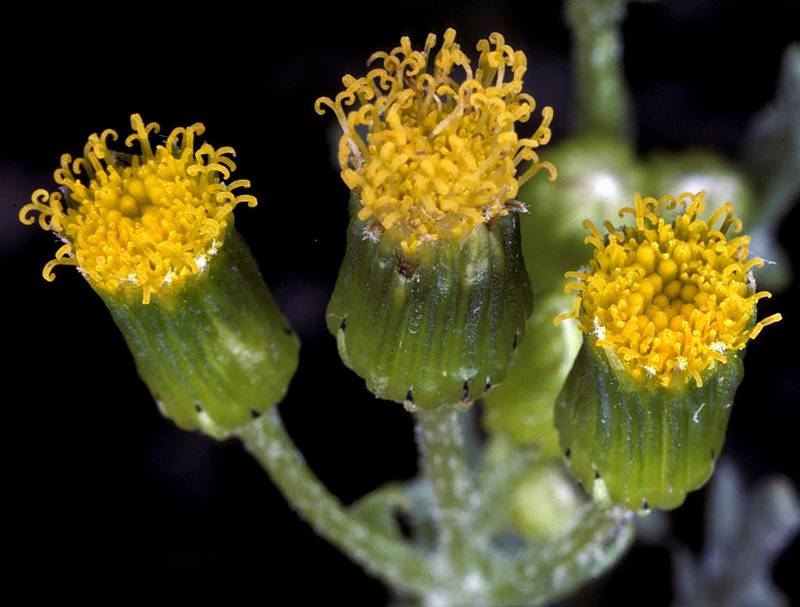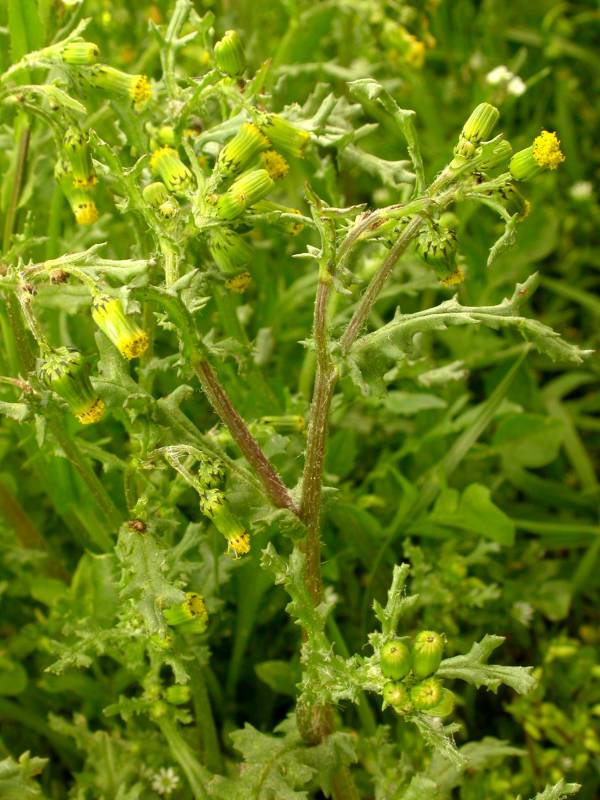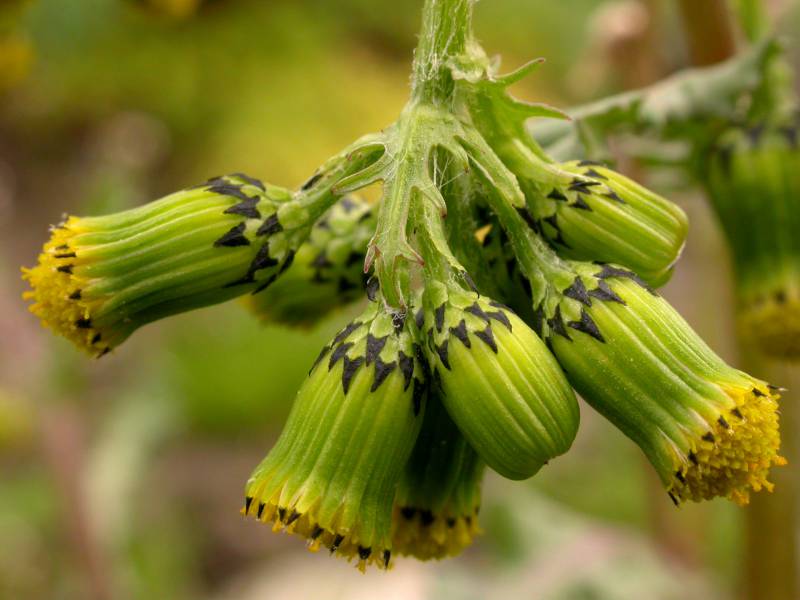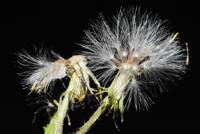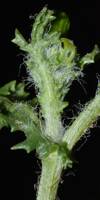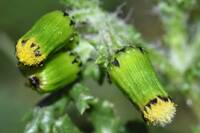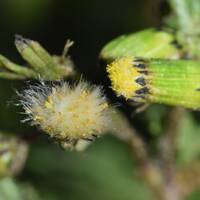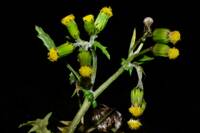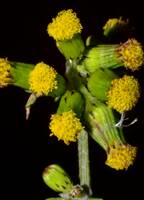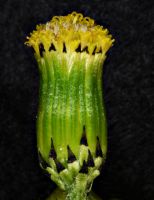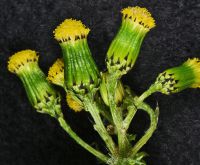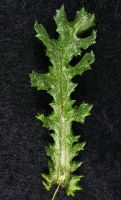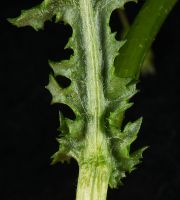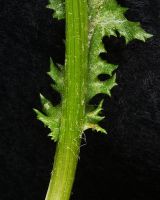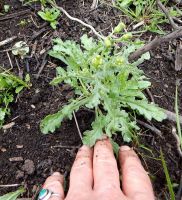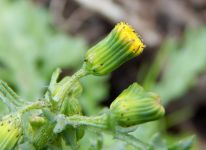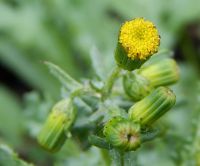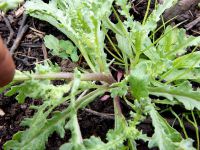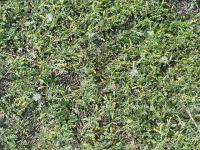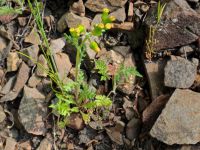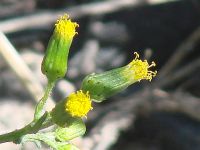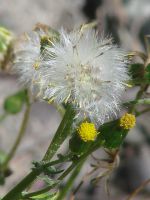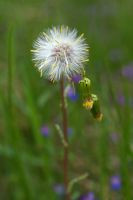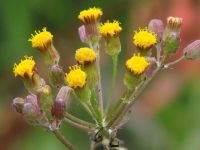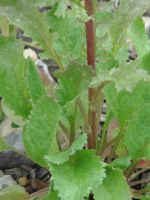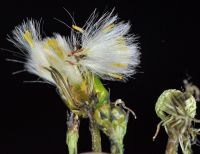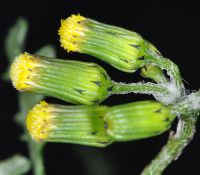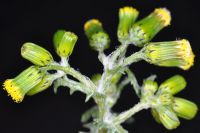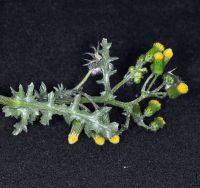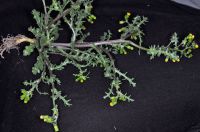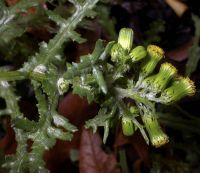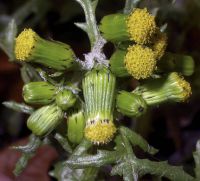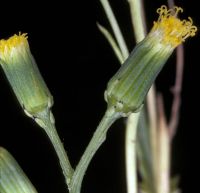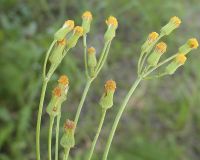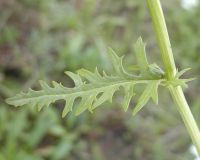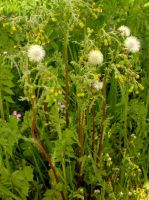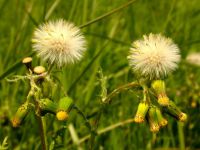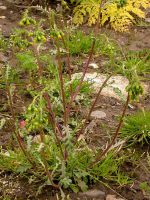Distribution: Occurring on both sides of the Cascades crest in Washington; Alaska to California, east across most of North America to the Atlantic Coast.
Habitat: Roadsides, waste ground, lawns, and other disturbed, open sites.
Flowers: February-September
Origin: Introduced from Europe
Growth Duration: Annual
Conservation Status: Not of concern
Pollination: Bumblebees, bees, butterflies, flies, beetles
Simple or strongly-branched, tap-rooted annual, 1-4 dm. tall.
Leafy throughout, the leaves coarsely and irregularly toothed to pinnatifid, 2-10 cm. long and 5-45 mm. wide, the lower tapering to a petiole, the upper sessile and clasping.
Heads many, strictly rayless, the flowers all tubular and perfect; disk usually 5-10 mm. wide; involucre 5-8 mm. high, the princeple bracts about 21, the bracteoles short but well-developed, black tipped; pappus copious.
Separate from the only other annual Senecio in our area by the number of involucre bracts (S. vulgaris has about 21, S. sylvaticus,13), the bracteoles (only S. vulgarisÆ are black-tipped) and the aroma (only S. sylvaticus is malodorous).
Publication: Sp. Pl. 2: 867. 1753.
PNW Herbaria: Specimen records of Senecio vulgaris in the Consortium of Pacific Northwest Herbaria database
WA Flora Checklist: Senecio vulgaris checklist entry
OregonFlora: Senecio vulgaris information
E-Flora BC: Senecio vulgaris atlas page
CalPhotos: Senecio vulgaris photos

